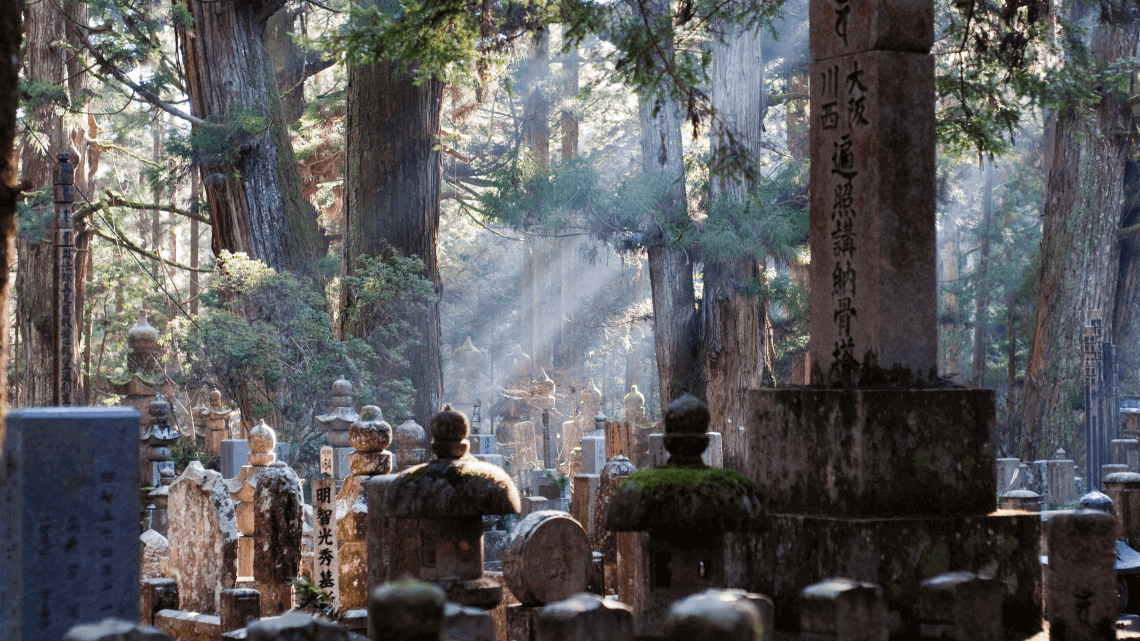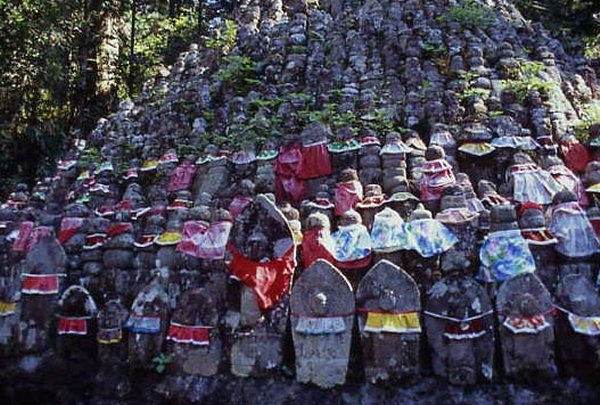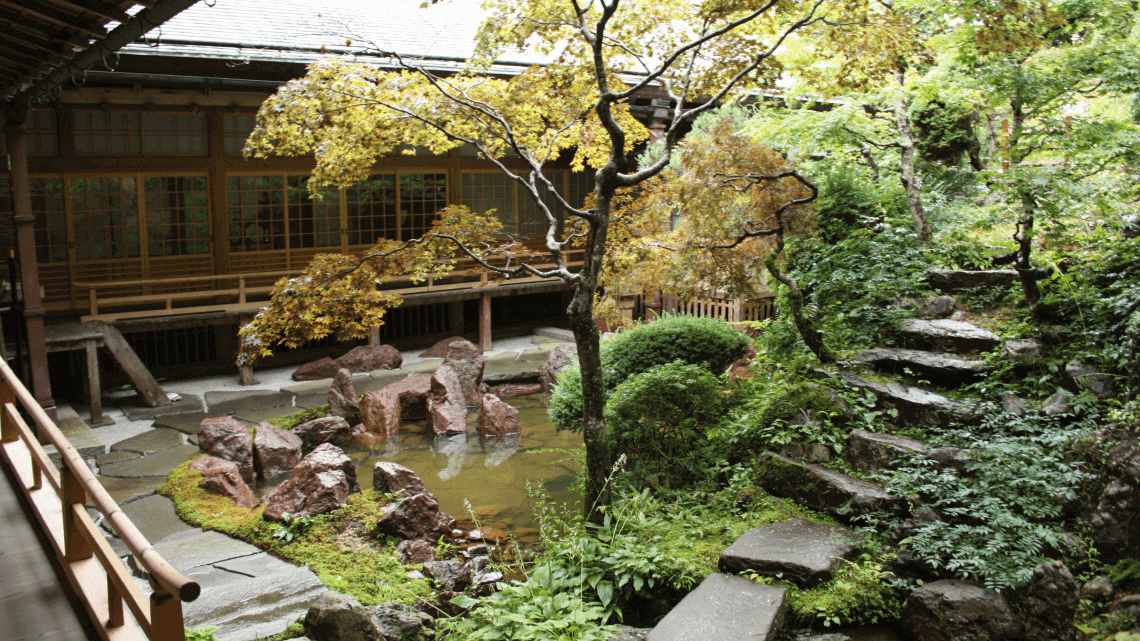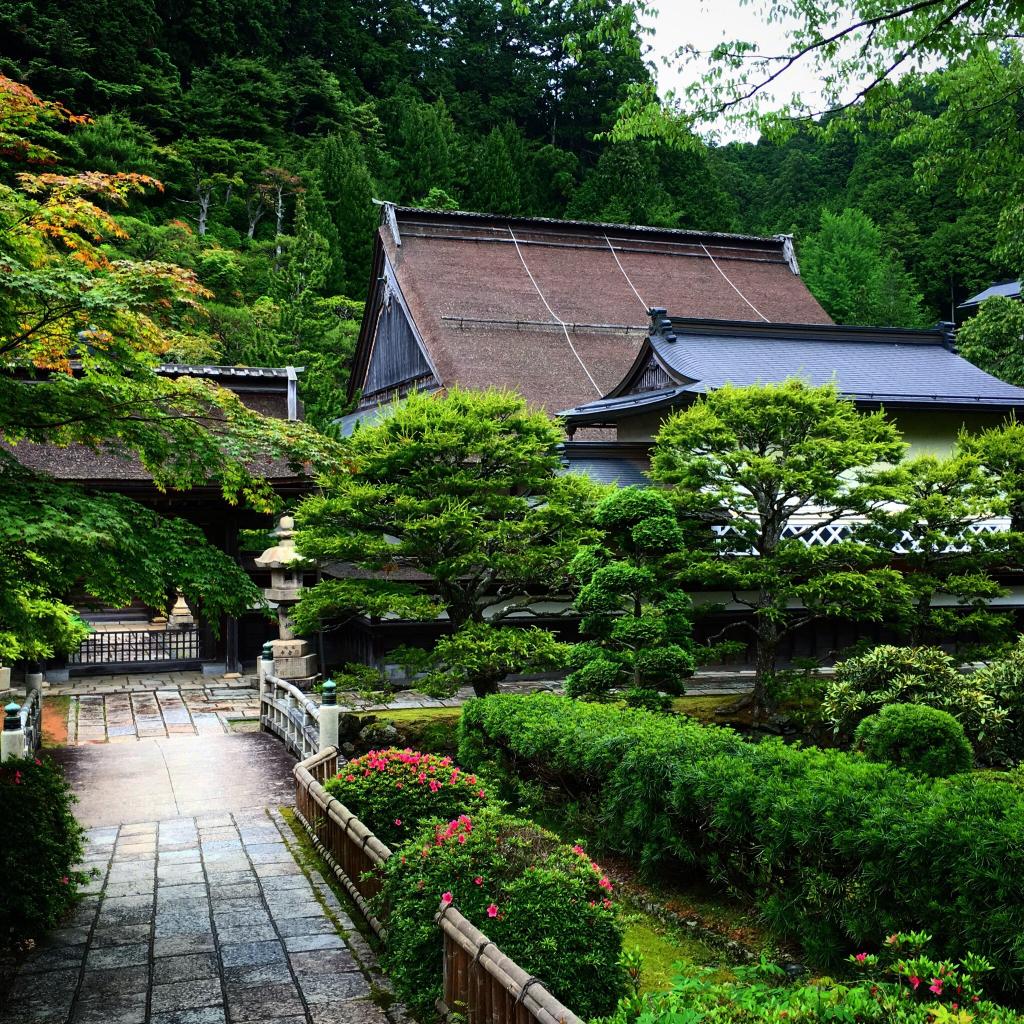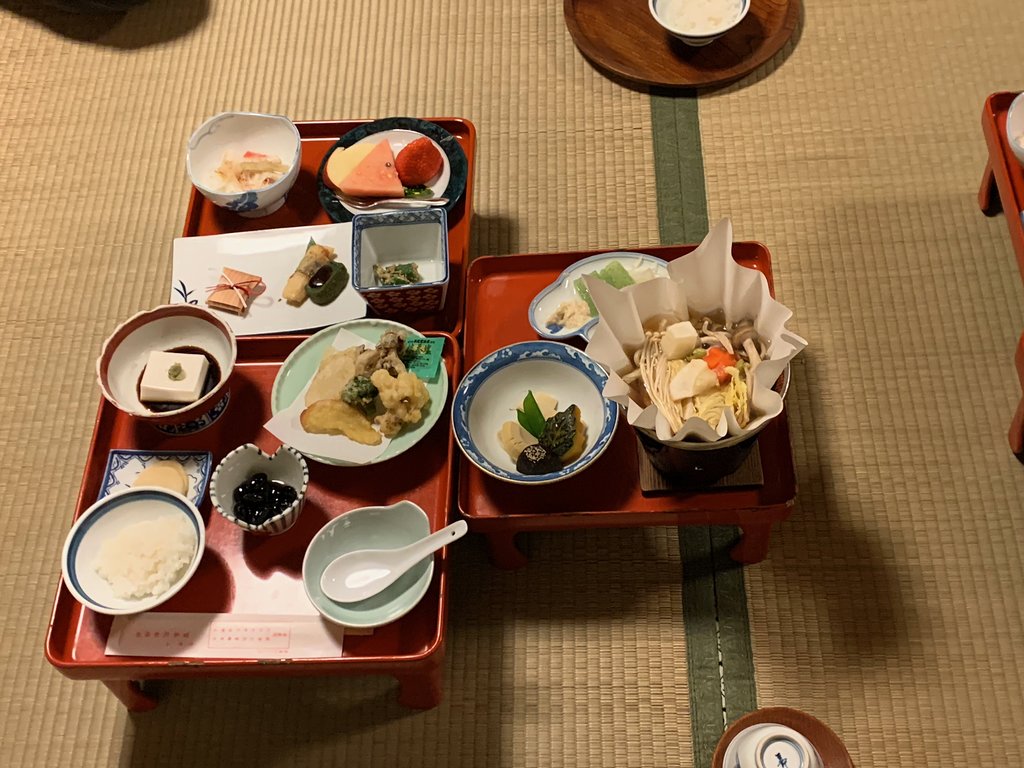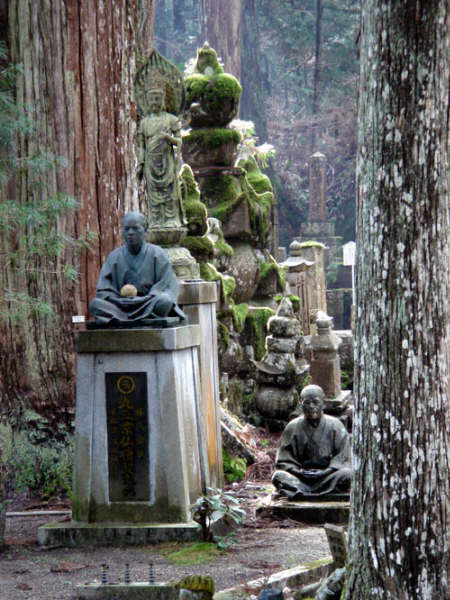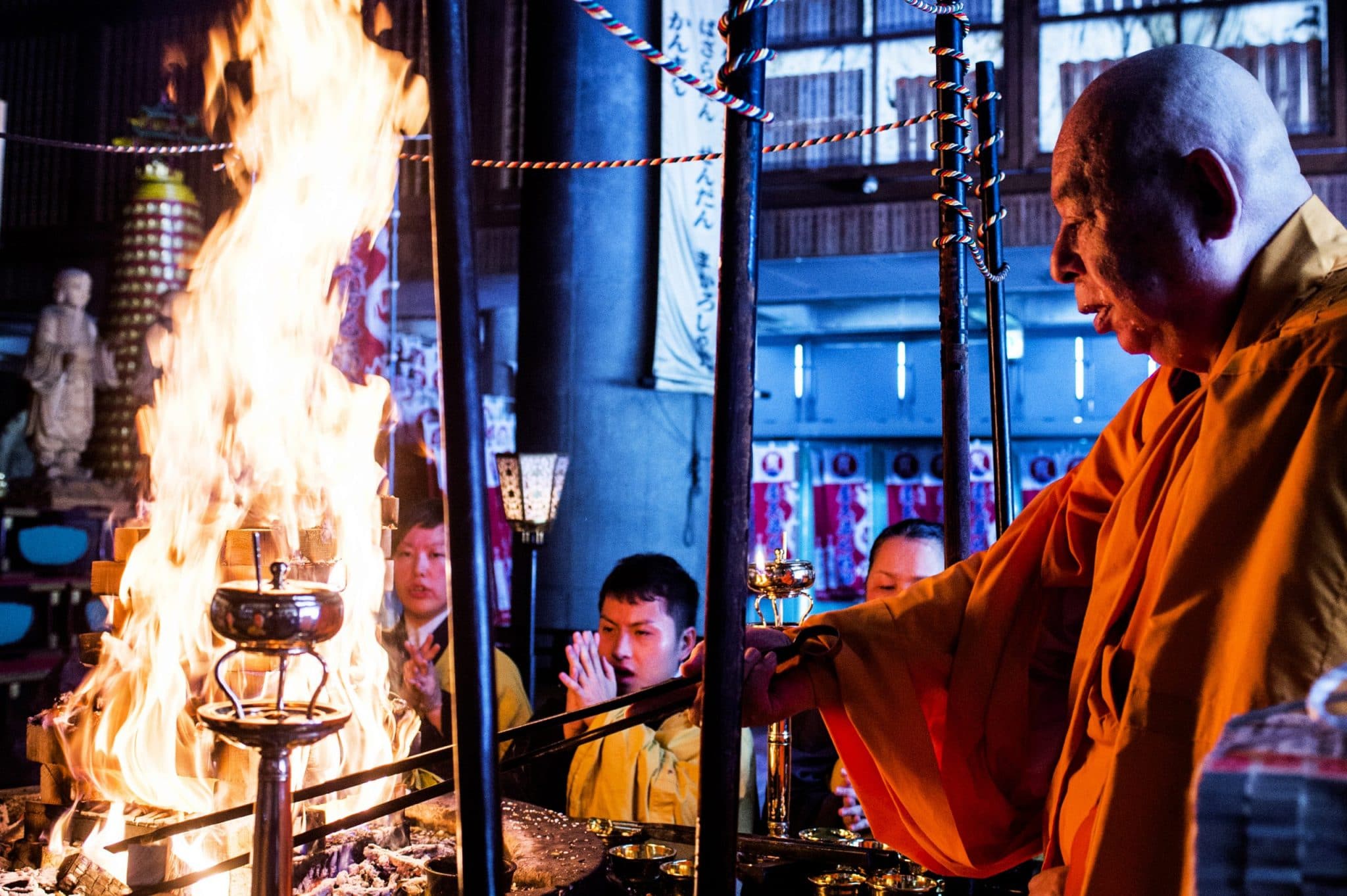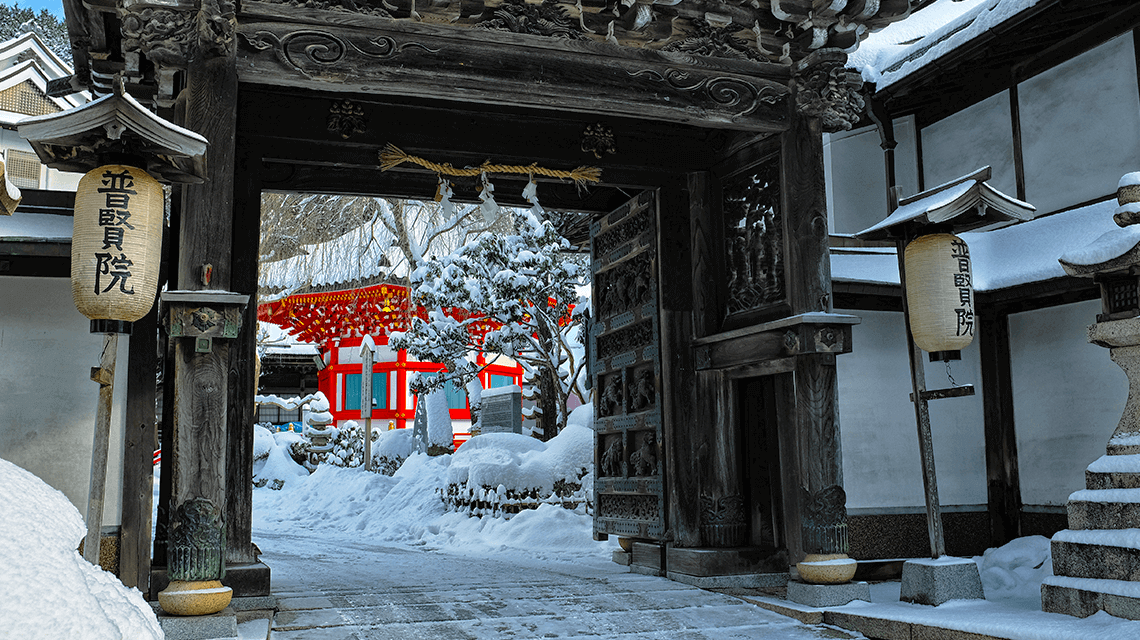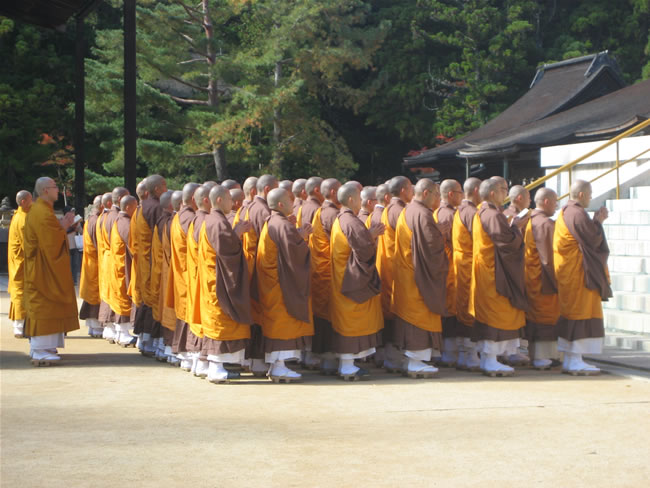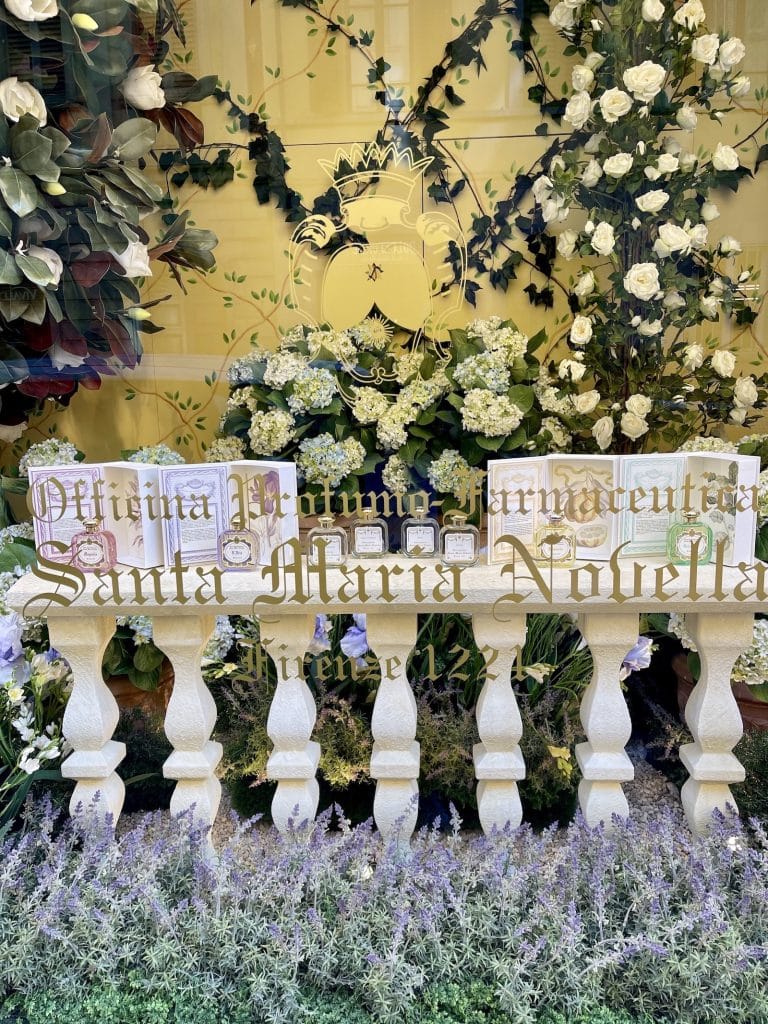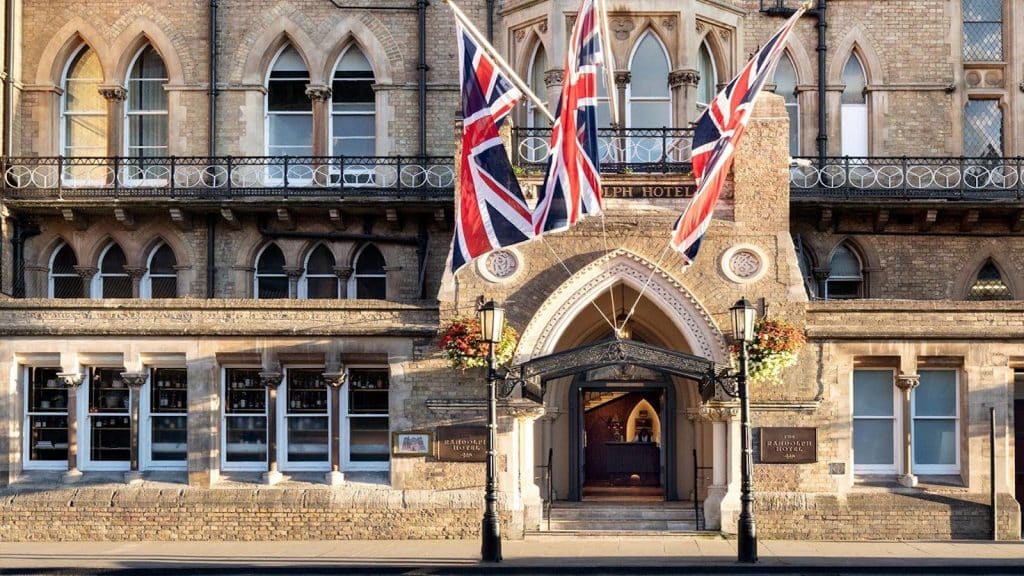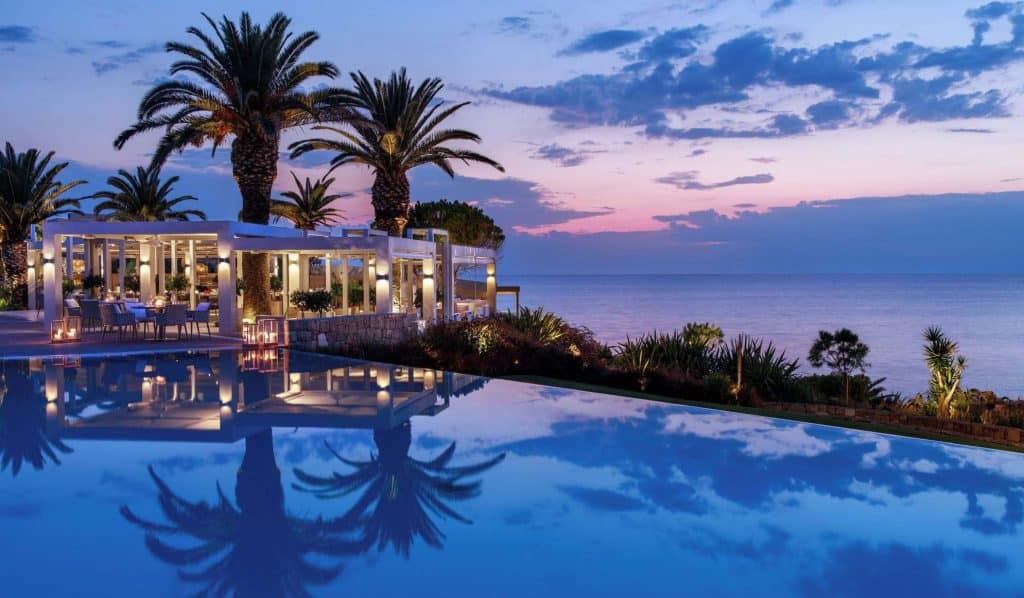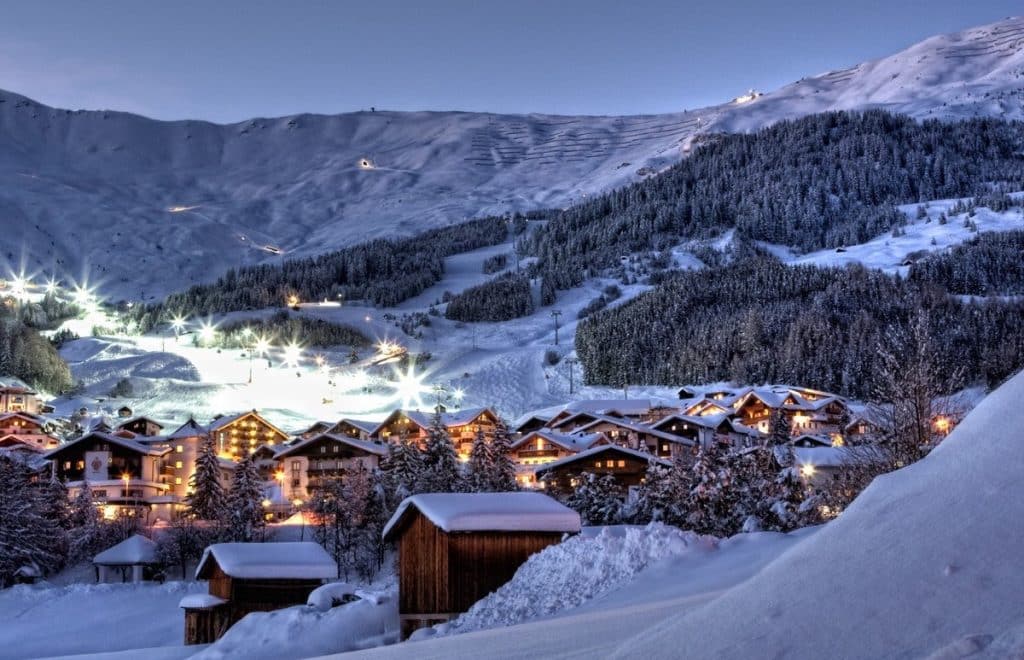Set in eerie black clusters of cedars at an altitude of 3,000 ft at the center of the Kii Peninsula, the imposing Mount Koya, – sometimes referred to as Koya-san – is Japan’s most venerated Shingon-Buddhist site, attracting over one million pilgrims per year.
In 816, Saint Kukai, also known by his posthumous name, Kobo Daishi, founded a monastic retreat here. Daishi left Japan in the year 804 and set sail for China to study the art of Tantric Buddhism, where he was granted a master title. Upon returning to Japan two years later, he began to spread the Shingon (true word) Sect of Buddhism which culminated in the Emperor of Japan granting him the land to build the monastery. By the Edo period, there were almost a thousand temples on the mountain, but typhoons and fire left their mark and there are now only 123 temples remaining.
The best way to reach Mount Koya is to take the cable car from Gokurakubasi station which can be joined via the Nankai line from Osaka. The 15 minute silent ride through the dense forested hillside is truly magical with the cedar trees erected like sentries flanking the path to a secret world.
The mountain’s unique and somewhat mystically charged atmosphere, is best experienced with an overnight stay. Mount Koya has 53 temple lodgings where you can stay and observe the monks as they go about their daily rituals.
We opted to stay at the Shojoshin-in Temple where the monks are renowned for their preparation of shojn-ryori: a vegetarian gourmet food which is skilfully cooked without use of any meat, fish, onions or garlic.
Delicious but delicate dishes consisted of tempura, koya-tofu, miso soup, sweet and sour seaweed in vinegar and wild potatoes. The actual method of preparation is a well preserved secret and has been passed down through generations of monks. Having eaten shojn-ryori for breakfast and dinner, we can confirm that it was one of the highlights of our stay!
In typical Japanese style, rooms within the temple are simple with screened doors, tatami mats and a small altar decorated with a flower or scroll. A thin, yet comfortable mattress is folded away every morning and rolled out again onto the floor in the evening. Early nights are a must as the monks prayer bell is rung every morning at 6am and guests are invited to visit the main hall of prayer at 6.30am.
Our first prayer session took place on a Sunday morning, along with six other guests. The temple was gently lit by candles and as our eyes became accustomed, we could see an abundance of black and gold boxes, along with offerings of grapefruit, flowers and red candles on a shimmering altar.
A bright crimson carpet streaked its way across a bed of simple beige tatami mats, signalling the way for prayer goers. Four monks, enveloped in orange robes, prayed in unison in the form of repetitive chanting which would occasionally be accompanied by the beating of a drum or the clash of cymbals.
The chanting held us all in a suspended hypnotic state until each person in turn was asked to navigate the crimson carpet on their knees, where upon reaching the altar, we were encouraged to drop incense into a burner whilst offering a prayer. We don’t count ourselves as a particularly religious, but the whole experience was incredibly moving due to the sheer intensity of witnessing the monks at prayer.
No trip to Mt. Koya is complete without a trip to Daishi’s mausoleum called the Okuno-in (inner sanctum) which is situated in the eastern half of Koya in a necropolis of over 200,000 tombs and is the most sacred spot on the mountain. There is a grand status attached to burial in Mount. Koya and the stone path leading to Okuno-in is lined with monuments and tombs housing the remains of Japan’s most powerful and illustrious families.
Elderly pilgrims, mostly dressed in white, climb the lantern-lined path leading to the central sanctuary of the Daishi faith. Some tombs along the way are touchingly decorated with red and purple bibs and hats and occasionally, jars of money are left along with little boxes of baby milk. These are left for Jizo who is the guardian of sick and miscarried children.
Directly in front of Daishi’s mausoleum is the Toro-do (Lantern Hall). 11,000 lanterns burn here day and night, including two that are said to have remained lit since the 11th century. This is where most of the pilgrims linger, including an elderly Japanese couple dressed in matching white capes, who, supported by walking sticks, stare ahead lost in thought. Their journey is complete. To us they are a remarkable sight, but here on Mt. Koya, they are just two more pilgrims amongst the many million.
For further information please visit: www.jnto.go.jp
All images by CELLOPHANELAND*
CELLOPHANELAND* were guests of JNTO.





